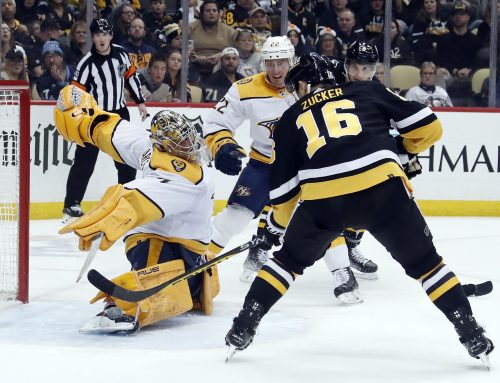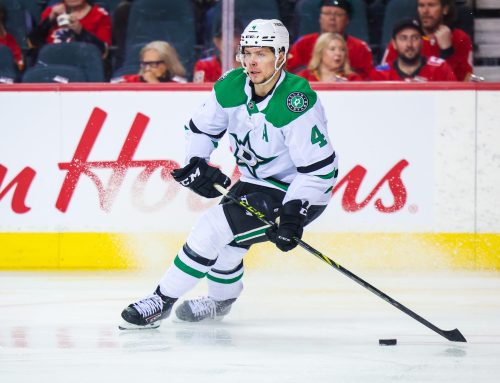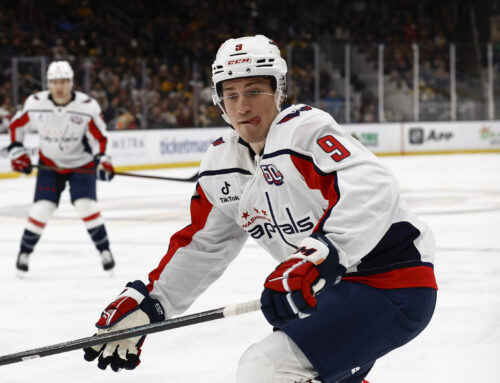
A couple weeks into the season, and Tampa Bay has lost to Ottawa, Jonathan Quick, Sergei Bobrovsky and Brayden Holtby have been worse than their backups, the highest scorer on Vancouver is J.T. Miller, and the Hurricanes are atop the NHL standings (as of Wednesday night). Some things are easier for us to see coming than others, so we may not know how the standings will shake out by the end of the season, but for some of the top performers in cap leagues thus far, we can dive into who we suspect will keep pace, and whose production is a mirage.
We’re going to avoid entry-level deals, as explaining their value is just like beating a dead horse.
****
Tyler Bertuzzi (LW) – Detroit Red Wings
Cap Hit: $1,400,000
Cost per-point: $200,000
The third and least heralded member of the top line in Detroit, Tyler Bertuzzi is proving he’s more than just a passenger, putting up three goals. Last season’s 47 points were nearly double his output from two years ago, and though we shouldn’t expect the 90-point pace to keep up and double his production again, another jump in production is expected. However, if someone is willing to buy on the Bertuzzi production of a point-per-game or more, rather than his likely final production range of 55-60 points, you can use him to fill a position of need on your roster.
William Carrier (LW) – Vegas Golden Knights
Cap Hit: $725,000
Cost per-point: $241,667
The 24-year-old Carrier finally broke through with a full-time position on the Golden Knights’ fourth line last season. That was, until he got injured, and it derailed his productive peripheral season. Carrier was on pace to surpass 400 hits last year, this year, his pace has dropped a little, but the scoring pace is up with a point in every second game. His 20% shooting percentage will even out, but a 30-point-pace is very possible. The combination of hits, cost, and moderate point totals makes Carrier a tough asset to replicate.
Evgenii Dadonov (LW) – Florida Panthers
Cap Hit: $4,000,000
Cost per-point: $571,429
In Dadonov’s two years since coming back from Russia, he has put up seasons of 65 points (in 74 games) and 70 points. That kind of consistency is tough to find for $4 million per year. This year is much of the same, putting up seven points in six games. His shooting percentage is a little high at 17.4%, but he has managed to score at a 14% rate the last two seasons, and continues to flank Aleksander Barkov both at even strength and on the power play. He has now played in 200 games, and I am wondering if after two full NHL seasons, he has slowed the game down a little, and will be able to actually markedly improve on his 70 point paces for the rest of this season. Would 85 points while playing beside a 95 point Barkov really surprise all that many people?
This isn’t your typical 30-year-old winger who is going to slow down next year. Dadonov is at his peak and should be for a couple more seasons now.
Mark Scheifele (LW) – Winnipeg Jets
Cap Hit: $6,125,000
Cost per-point: $510,417
The big gun in Winnipeg (especially based on his contract) is Blake Wheeler, however the Jets have a few other weapons, and thus far, the best cost-per-point producer is Marc Scheifele. The centreman is just hitting his prime, and the top players on his team are all wingers, meaning he will always be surrounded by top talent. His contract runs for another four years after this season, and Scheifele should be a highly ranking name on the points per dollar list for the rest of this season, as well as the rest of the contract.
Brayden Schenn (C) – St. Louis Blues
Cap Hit: $5,125,000
Cost per-point: $732,143
Schenn signed a $6,500,000 AAV extension in the first week of October, but in the meantime, he is still being paid just over $5 million per season, while putting up respectable point totals. Additionally, Schenn stuffs the peripheral categories, so his value is higher outside of pure points leagues. If your league is points only, then Schenn’s hot start may actually mean he’s best as a sell-high chip for you. He has hit 60 points just once in his career, his shooting percentage is high (35%), his minutes are down (under 18 minutes a game), and he has been a part of 100% of the goals scored by the Blues while Schenn was on the ice. Numbers like those are not sustainable, and by the end of the season, Schenn will still be a 55-60 point player.
****
All salary info courtesy of capfriendly, cost/point and other statistics are all pulled from FrozenTools.
If you have questions, comments, or article requests, you can find me on Twitter @alexdmaclean.
****
Previous Capped articles:





 EDM
EDM FLA
FLA CHI
CHI ANA
ANA CGY
CGY STL
STL
